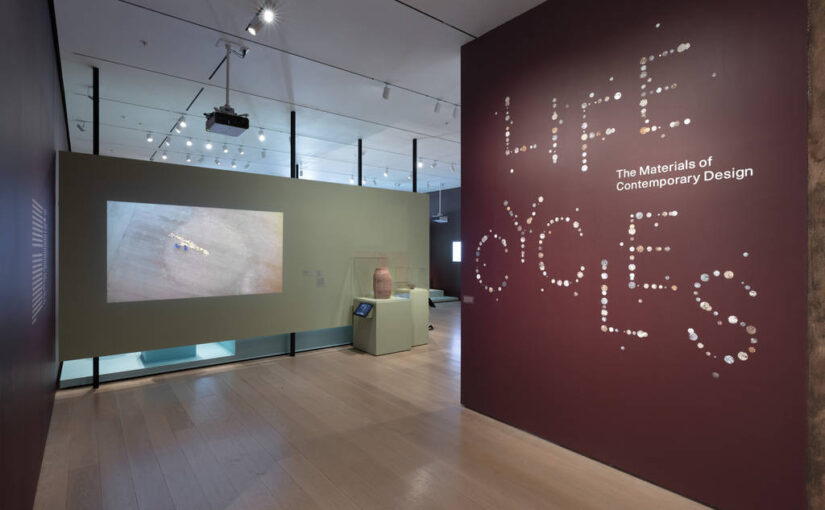I went to MOMA to see an exhibit, something I don’t normally do. This was the second time that I went to the MOMA to see an exhibit. I have been volunteering at Saint Thomas Church for a while now before the pandemic shut it down and I have passed by MOMA, back then was when I visited it. It was a good day, and it was nice. The exhibit was lovely to see and I learned a lot from being there and learning as much as I can.
I went to see “Life Cycles: The Materials of Contemporary Design,” an exhibition that examines how design can be elegant and innovative while also responsible and respectful of other ecosystems. On view in the Museum’s street-level gallery from September 2, 2023, through July 7, 2024, this exhibition of approximately 80 contemporary design works from MoMA’s collection looks at how some 40 designers are considering the full life-cycles of materials—from extraction to recycling, upcycling, or disposal. The exhibition investigates the fundamental role design can play in translating current environmental considerations into sophisticated and informed responses.
‘Life Cycles: The Materials of Contemporary Design’
Composed of some 80 objects from 40 design and art practitioners (and almost entirely pulled from MoMA’s collection), the show is both a prompt and a continuation of a thread. As the title itself lays out, it’s an exploration of materials and their lifespan – with time being of the literal essence. This go-around, it’s a consideration of how these materials function from extraction to use/reuse to disposal. Says Antonelli, ‘It’s about rereading [these works] in the context of today, in the context of the environmental crisis, and new ways to build and new ways to design.’ She is the senior curator at the museum.
Out from the archive comes iconic pieces of design like Nendo’s Cabbage Chair, 2007, and Tomáš Gabzdil Libertíny’s The Honeycomb Vase “Made by Bees,” 2006, originally acquired for their novel materiality. The Cabbage Chair, made from by-product paper waste from Issey Miyake’s fabric pleating process, is a lesson in circularity; while The Honeycomb Vase, produced entirely from bees themselves, is the embodiment of zero-waste.
I think the exhibit is a great showcase of how designers are incorporating environmentally friendly practices in their work. Currently, our planet is being destroyed, and it seems like our government is not doing enough to address this issue. As designers, I believe we have a moral responsibility to be mindful in our approach to design. By using materials that can be recycled or disposed of responsibly, we can create new and amazing things. There is beauty in everything that can be repurposed. Design is a very powerful force to be reckoned with and a tool to change the way things work in the world by changing people’s behaviours.



